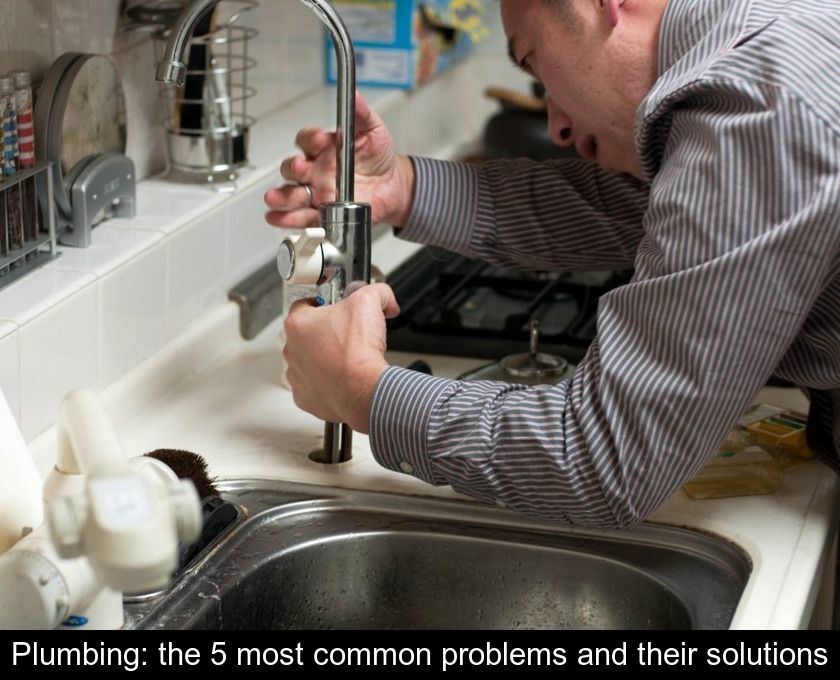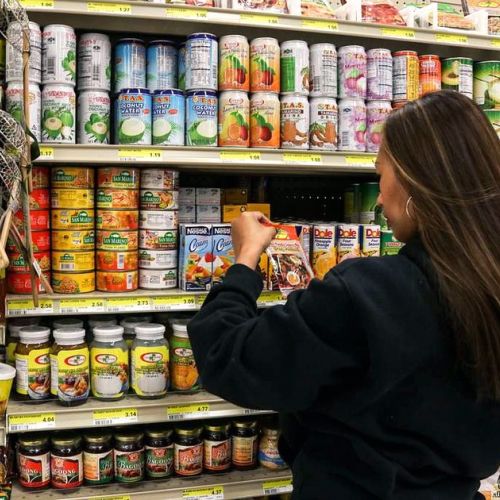Plumbing: The 5 Most Common Problems And Their Solutions
When faced with certain plumbing problems, such as detecting and repairing water leaks, unclogging a drain or troubleshooting a hot water tank, it is imperative to call a licensed plumber. This specialized craftsman is trained to perform all repairs in the field of plumbing. While waiting for him to intervene, there are a few tips to know to avoid the problem getting worse. We have listed for you the 5 most common plumbing problems and their temporary solutions, until the plumber arrives.
1- The search for a leak
If you notice a water leak in your home or you are informed by a neighbor who notices water seepage on his ceiling or wall, you should contact a licensed and cheap plumber in Brussels without further delay for a leak search.
The water leaks are very common plumbing problems because the pipes can corrode, loosen or crack under the effect of frost.
Signs that should alert you are the presence of mold or rust, darkened surfaces on the walls or even drips and puddles on the floor.
To easily locate the source of the leak, you can simply run your finger along the pipe to look for signs of moisture.
Water leaks sometimes go unnoticed, but they increase your bill and can insidiously damage the walls of your home.
In this case, another simple way to detect the presence of a leak is to close all faucets and appliances that use water in your home and check your water meter.
Read the number on the meter, write it down, then wait an hour or two and go back and check the meter to see if the number has gone up when no one has used any water.
In the event of a leak, the first thing to do is to contact your insurance company to report the problem. Typically, the insurance company you have your homeowners insurance with is going to require you to have a leak search performed by a licensed plumber.
The purpose of this procedure is to determine the exact nature of the problem and the location of the water leak. The problem can indeed come from the waterproofing, the piping, the taps or your sanitary facilities, for example your bathtub or your shower tray...
Only once the origin of the leak has been found can the repairs begin.
Remember that a water leak is a problem not to be ignored. If you don't call a plumbing company quickly, you risk having your water consumption rise and the damage worsen in your home or your neighbors' homes.
2- Repairing a leak in the pipes or hot water tank
Leaky pipes are one of the most common plumbing problems. Fortunately, this is a fairly easy and quick problem to solve, provided the plumbing is accessible.
Sometimes the pipes are embedded. In this case, the pipe must first be accessed in order to proceed with the repair. When the leakage problem is inside a wall, it is sometimes necessary to remove the covering (the tiles of your bathroom for example) and to break the wall to repair the leak.
But, in all cases, the first thing to do while waiting for the plumber to come is to cut off the water. If you don't have a shut-off valve in your home, contact your building's superintendent to turn off the water urgently.
Once there, the plumber will assess the situation and proceed with the repair depending on the nature and extent of the problem. This repair may consist of replacing a simple joint or welding, or replacing part of the damaged piping.
If the leak is in your hot water tank, the problem may involve the fittings, the safety group or the tank (which may be pierced). The plumber's intervention will therefore be more or less long and complex depending on the situation.
In the first case, it is enough to tighten the connections. But if the failure concerns the safety group, it must either be repaired or changed. Finally, if the tank is pierced, it is necessary to completely replace the hot water tank.
As you can see, the extent of the repair and the amount of the estimate depend on the precise diagnosis of the problem by the plumber.
3- Unclogging toilets or drains
Other common plumbing problems include clogged pipes and clogged toilets.
In fact, in the bathroom, the accumulation of soap scum and hair contributes to clogs in the pipes, at the shower or sink for example.
In the kitchen, it is mainly food residue that goes down the sink and clogs the pipes. This problem has probably already happened to you if you are not careful and pour cooking oil or certain kitchen waste down the drain.
In the case of toilets, there can be many causes of clogging. The problem can be caused by an object that has accidentally fallen into the bowl. It can also be related to an accumulation of wipes or cardboard rolls that were mistakenly thrown into the bowl.
Toilet unclogging is of course an emergency procedure since this problem prevents you from using your toilet.
To remedy this, the plumber can opt for different methods. The most common method of unclogging is to use a manual pump or to run an electric ferret through the pipes.
The plumber can also use a suitable acid, but this should only be done by a licensed plumber as it is a powerful product reserved for plumbing professionals.
While waiting for the intervention of this professional, do not put in your toilet any unblocker product, as found in supermarkets and DIY stores.
Most people resort to these products thinking they're doing the right thing, but that's a mistake because it can clog your pipes even more.
4- Repairing the flush
In toilets, when the problem is not with the water discharge, the most common failures involve the flush. It is indeed very common for this part of your toilet to leak or stop working.
If you notice that the flush is leaking, that water is constantly flowing into the toilet bowl or that the tank can no longer be filled, you should call a cheap plumber without delay, because this professional will diagnose the precise origin of the problem.
Indeed, the flush of your toilet is composed of two distinct systems :
- the filling system equipped with a float, whose role is to stop the water flow when the tank is full
- the water discharge system, whose role is to release the water when you flush.
This explains why a flush failure can have very different causes. The failure can come from the mechanism, the float or the tightening of a seal...
When your flush deteriorates due to wear and tear or limescale, a simple repair is sometimes sufficient (for example, replacing a seal or adjusting the float to get things back to normal). But sometimes a complete replacement of a part is necessary and only a plumber can judge.
5- Boiler or water heater breakdowns
Finally, all breakdowns located in the service hot water system, a boiler or a water heater, require the intervention of a professional plumber-heater.
A maintenance contract for these installations, sometimes imposed by law, allows you to enjoy a more efficient system, thanks to regular descaling and maintenance of the safety group of the device.
The purpose of this type of annual maintenance contract is to avoid a decrease in the performance of the appliance, an increase in its consumption, accelerated corrosion of the installation and an increased risk of leakage...
However, even if these installations are subject to periodic inspections, it is not impossible that problems may arise when you need hot water the most.
Failures in these systems are particularly annoying because they prevent you from having hot water in your home and from comfortably using your shower and toilet.
The rapid intervention of a certified plumber is then necessary to proceed to the diagnosis and the troubleshooting of your installation.
The causes of a breakdown in a hot water tank can be multiple, including an accumulation of scale, a failure of the thermostat or resistance, or a leak in the tank.
However, if the problem is an electrical malfunction, you should call an electrician.













